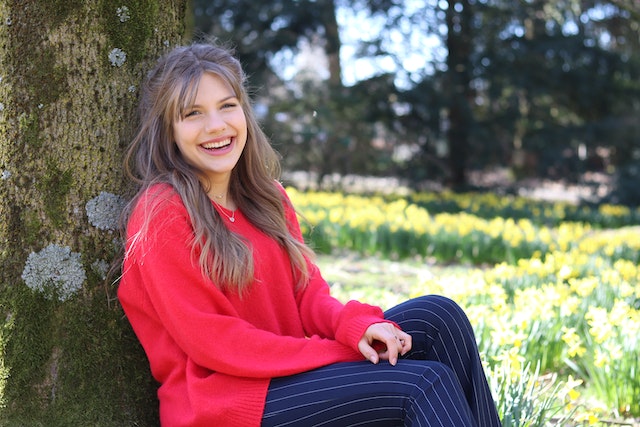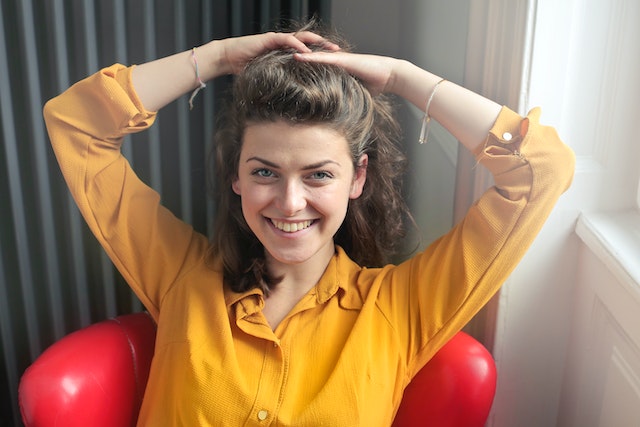
In photography, few subjects possess the raw, unfiltered essence of candid portraits. These clandestine captures offer a glimpse into the unadulterated soul of a person, freezing a momentary expression brimming with genuine emotions, unmasked by the façade often worn in posed photographs. Candid portraits are a window into reality, a testimony to life’s fleeting moments, and a celebration of true authenticity.
When the shutter clicks discreetly, the power of the candid portrait lies in its ability to evoke a sense of connection, both between the subject and the viewer, and among all of humanity. A candid portrait tells a story beyond simple visual composition. It holds the power to reveal the depths of human experience—the unspoken joy, the secret pain, the shared vulnerability that unites us all.
It is in these unguarded moments that the essence of our humanity shines through; the imperfections, the quirks, the unrestrained laughter, and even the occasional tear. Candid portraits peel back the layers of societal expectations, bringing forth genuine expressions, unfiltered by self-consciousness. Through their unscripted nature, they offer a refreshing departure from the carefully curated masks we often don in our daily lives.
Capturing candid portraits requires an acute sense of timing and observation. Photographers must possess a sixth sense, anticipating brief yet profound moments as they unfold before their lens. They must be nimble, yet invisible, ensuring their presence does not disrupt the natural flow of life. The magic of portrait photography lies in immortalizing those stolen glances, erupted laughter, or poignant tears that encompass the human experience.
The Art of Candid Portraits
Candid portraits capture the essence of humanity in its purest form. In this section, we delve into the artistry behind shooting these captivating photographs. From the importance of timing to the art of observation, every aspect plays a role in capturing these fleeting moments of authenticity.
The Power of Timing
In candid photography, timing is everything. The ability to anticipate and capture a fleeting moment requires a photographer’s keen instinct, as they navigate the ever-changing landscape of human expressions and interactions. The power of timing lies in its ability to freeze a moment in time, preserving an authentic and unguarded emotion that might otherwise go unnoticed. In this section, we explore the significance of timing in candid photography and delve into the concept of the decisive moment.
Anticipation
More than just their equipment and tools of the trade, candid photographers possess a unique ability to anticipate moments of significance in the lives of their subjects. They have an uncanny knack for sensing when an expression is about to transcend the ordinary and become extraordinary. With subtle gestures or a slight shift in body language, these photographers can capture the unspoken words that reveal the true essence of an individual.
To anticipate these moments, a photographer must immerse themselves in the scene, becoming attuned to the rhythms and nuances unfolding before them. They become a silent observer, always ready to press the shutter at precisely the right moment. It is through this anticipation that candid photographers bring to light moments unseen by others, immortalizing them in their art.

Decisive Moments
Henri Cartier-Bresson, hailed as the father of modern photojournalism, popularized the concept of the “decisive moment” in photography. This philosophy emphasizes the significance of capturing the perfect instant when all the elements within a photograph align harmoniously. It is at this precise moment that the full impact of a candid portrait is realized.
The decisive moment is not restricted to a particular context or subject. It can manifest in a myriad of ways—a subtle smirk, a tear-filled gaze, a burst of laughter.
It is the pinnacle of storytelling, where a single frame encapsulates a multitude of emotions and experiences. It is through the lens of the decisive moment that candid photography transcends simple documentation, elevating it to an art form that speaks to the core of our shared humanity.
Building Trust
Building trust with your subjects undeniably plays a crucial role in capturing candid portraits that exude authenticity. When individuals feel comfortable and at ease, they are more likely to reveal their true selves, allowing photographers to immortalize genuine emotions and unguarded moments within their frames.
Establishing a Connection
- Listen and engage: Truly understanding your subjects begins with active listening. Take the time to connect with them on a personal level, showing genuine interest in their stories, experiences, and aspirations.
- Empathy and compassion: Show empathy towards your subjects, making them feel understood. Compassion allows you to see beyond the surface and capture the emotions they may otherwise conceal.
- Shared experiences: Find common ground and shared experiences to foster a sense of camaraderie. This connection paves the way for a deeper understanding and collaboration during the photoshoot.
Creating a Comfortable Environment:
Infuse your interactions with warmth and approachability. Offer a friendly smile, a reassuring word, and a relaxed demeanor to put your subjects at ease.
Create a safe space by maintaining an open-minded and non-judgmental attitude. Encourage self-expression and assure your subjects that their vulnerability will be met with respect and admiration.
Recognize that trust takes time to build. Be patient and adaptable, allowing your subjects to feel more comfortable as the shoot progresses. Be open to unexpected moments and be willing to adjust your plans accordingly.
Blending Into the Background
As a candid photographer, your presence should be barely noticeable. Blend into the background, becoming an unobtrusive observer. This allows your subjects to forget about the camera, enabling them to express their true selves without inhibition.
Maintain a respectful physical and emotional distance from your subjects. Intrusion can inhibit their authenticity and disrupt the natural flow of intimate moments. Give them space to express themselves while remaining mindful of their comfort zones.
Honoring Boundaries
Communication is key: Ensure that you establish clear communication with your subjects from the start. Discuss boundaries, comfort levels, and any concerns they may have. This open dialogue fosters a sense of trust and ensures a collaborative and respectful working relationship.
Consent and permission: Seek consent before capturing and sharing any photograph. Depositing control over their own image empowers subjects and reaffirms your commitment to their trust and privacy.

The Challenge of Candid Portraiture
Candid portraiture is a unique and captivating genre of photography but it comes with its own set of challenges. In this section, we explore the difficulties and obstacles that photographers encounter when attempting to capture authentic moments through candid portraits. From the technical aspects of camera settings to the emotional and ethical considerations, candid portraiture requires a delicate balance between artistry and respect for privacy.
Technical Considerations
- Lighting: Making the best use of available light can be a challenge in candid photography, as the photographer often has little to no control over the lighting conditions. Learning to adapt to different lighting situations is crucial in capturing compelling candid portraits.
- Focus and Composition: In the flux of spontaneous moments, getting the right focus and composition can be demanding. The photographer needs to be agile and responsive, ensuring that their subject remains sharp and the composition effectively conveys the story within the frame.
- Camera Settings: Candid photography necessitates quick adjustments to camera settings to capture movement, depth of field, and other elements that enhance the narrative. Photographers must be proficient in their equipment and have a thorough understanding of exposure, shutter speed, and aperture to make split-second decisions.
Emotional Considerations
- Ethics and Consent: Candid photography can raise questions regarding privacy and consent. Respecting the boundaries of individuals is essential, and photographers should ensure they have permission to capture and share candid portraits. Communication and transparency become paramount in navigating these ethical considerations.
- Emotionally-charged Situations: Candid portraits often capture subjects experiencing a wide range of emotions, including vulnerable or intense moments. Photographers must approach these situations with empathy and sensitivity, recognizing the emotional impact their work may have on both the subject and the viewers.
Establishing Connection
Establishing a rapport with the subject is vital in candid portraiture. Building trust and making your subject comfortable are essential steps towards capturing their authentic self. Avoiding intrusion and creating a safe space is crucial to evoke genuine emotions.
Candid photographers may encounter challenges when seeking access to intimate or personal situations. Being respectful and patient while seeking permission can help overcome these barriers and gain trust from the subjects.

Capturing the Unpredictable
Missed Opportunities: Candid photography demands anticipation and instinct. There may be instances when the decisive moment passes too quickly or is lost altogether. Accepting that missed opportunities are part of the process allows the photographer to remain open and attuned to future possibilities.
Balancing spontaneity and storytelling: Candid portraits aim to capture natural and unscripted moments, but they should also tell a compelling story. Balancing these two aspects requires skill and creativity, ensuring that the captured moment resonates with viewers on an emotional level.
Candid portraiture is an art form that requires technical prowess, emotional intelligence, and ethical considerations. Overcoming the challenges of fleeting moments, lighting constraints, and establishing trust with subjects is a continual learning process. By embracing these challenges, photographers can create candid portraits that resonate with authenticity and captivate viewers, immortalizing transient emotions and stories.